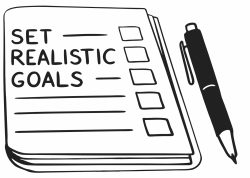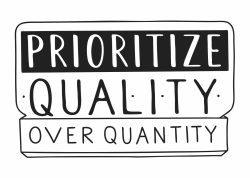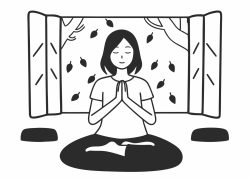Question More, Action Knowledge.
Remember, at QMAK, we don’t just teach; we empower. We don’t just inform; we inspire. We don’t just question; we act. Become a Gold Member, and let’s unlock your child’s full potential, one question at a time.
![]() In the pursuit of personal growth and achievement, we often operate under the assumption that more is always better. We believe that if we just put in more time, more effort, or more resources, we’ll continue to see a corresponding increase in results. However, this linear thinking fails to account for a fundamental principle of life: the law of diminishing returns.
In the pursuit of personal growth and achievement, we often operate under the assumption that more is always better. We believe that if we just put in more time, more effort, or more resources, we’ll continue to see a corresponding increase in results. However, this linear thinking fails to account for a fundamental principle of life: the law of diminishing returns.
Understanding this law and learning to identify equilibrium points is crucial for optimizing our efforts and achieving our goals more efficiently.
In this article, we’ll explore the concept of equilibrium points, their relationship to the law of diminishing returns, and how we can apply this knowledge to various aspects of our lives. We’ll also discuss strategies for teaching children about this important principle, helping them develop a more balanced and effective approach to learning and personal growth
The law of diminishing returns states that there is not always a direct, linear relationship between the amount of effort or resources invested and the resulting output or benefit. In other words, more is not always better. At a certain point, increasing the input will lead to progressively smaller gains in output, until eventually, additional effort yields little to no improvement.
This is where the concept of equilibrium points comes into play. An equilibrium point is the optimal level of input where the ratio of effort to output is most favorable. It’s the sweet spot where we’re getting the maximum benefit for our investment without wasting time or resources on diminishing returns.
![]() To better understand equilibrium points and the law of diminishing returns, let’s consider a simple example: eating donuts. Imagine that your first donut of the day brings you a tremendous amount of joy and satisfaction. You decide to have a second donut, which is still quite enjoyable, but not quite as delightful as the first. By the time you reach your tenth donut, the pleasure you derive from each additional donut is significantly diminished, and you might even start to feel sick.
To better understand equilibrium points and the law of diminishing returns, let’s consider a simple example: eating donuts. Imagine that your first donut of the day brings you a tremendous amount of joy and satisfaction. You decide to have a second donut, which is still quite enjoyable, but not quite as delightful as the first. By the time you reach your tenth donut, the pleasure you derive from each additional donut is significantly diminished, and you might even start to feel sick.
This example illustrates that there is no linear relationship between the number of donuts consumed (input) and the amount of joy experienced (output). The first few donuts provide the greatest benefit, but beyond a certain point, the returns diminish rapidly. The equilibrium point, in this case, might be around two or three donuts – enough to satisfy your craving and bring you pleasure, but not so many that you experience negative consequences.
![]() Another way to think about equilibrium points is through the lens of the Goldilocks principle. In the classic fairy tale, Goldilocks tries out three different chairs, three bowls of porridge, and three beds, always seeking the option that is “just right” – not too hard or too soft, not too hot or too cold, not too big or too small.
Another way to think about equilibrium points is through the lens of the Goldilocks principle. In the classic fairy tale, Goldilocks tries out three different chairs, three bowls of porridge, and three beds, always seeking the option that is “just right” – not too hard or too soft, not too hot or too cold, not too big or too small.
Similarly, in our own lives, we should strive to find the “just right” zone when it comes to our efforts and investments. This means identifying the equilibrium point where we’re getting the maximum benefit without going overboard or experiencing burnout.
For example, consider the act of reading. If you try to read at a pace of 900 words per minute, you might find that your comprehension suffers, and you retain less information.
On the other hand, if you read too slowly, you might not be able to get through as much material as you’d like. The equilibrium point for reading speed is the pace at which you can comfortably understand and retain the information you’re consuming.
Helping children understand the concept of equilibrium points and the law of diminishing returns is an important part of their education and personal development. By introducing these ideas at a young age, we can help them develop a more balanced and effective approach to learning, goal-setting, and resource management.
Here are some strategies for teaching children about equilibrium points:
1. Use Relatable Examples: Start by using examples that children can easily understand and relate to, such as the donut scenario described earlier. You can also use examples from their own lives, such as the diminishing returns of playing a video game for hours on end or the optimal amount of time to spend practicing a musical instrument.
2. Encourage Experimentation: Help children discover equilibrium points through hands-on experimentation and trial-and-error. For example, you can have them try different study techniques and track their results to find the approach that yields the best balance of effort and retention.
3. Discuss the Importance of Balance: Emphasize the idea that more is not always better and that finding the right balance is key to success and well-being. Encourage children to think about how they can apply this principle to various aspects of their lives, from schoolwork to extracurricular activities to personal relationships.
4. Model Effective Behavior: Children often learn best by observing the adults in their lives. By modeling a balanced approach to work, learning, and personal growth, you can help them internalize the importance of finding equilibrium points and avoiding the pitfalls of diminishing returns.
Understanding equilibrium points and the law of diminishing returns is not only valuable for optimizing our efforts and resources but also for promoting personal growth and well-being. By identifying the “just right” zone in various aspects of our lives, we can achieve better results while minimizing stress, burnout, and wasted effort.
Here are some ways to apply the concept of equilibrium points for personal growth:
Set Realistic Goals: When setting personal goals, consider the law of diminishing returns and aim for targets that are challenging but achievable. Avoid the temptation to overextend yourself or pursue unrealistic objectives that will lead to frustration and burnout.

Prioritize Quality Over Quantity: In many areas of life, the quality of our efforts is more important than the sheer quantity. Focus on doing a few things exceptionally well, rather than spreading yourself too thin and achieving mediocre results across the board.

Practice Self-Awareness: Pay attention to your own energy levels, motivation, and results as you engage in different activities. Look for signs that you may be reaching the point of diminishing returns, such as decreased enthusiasm or stagnating progress. Use this self-awareness to adjust your approach and find your equilibrium point.

Embrace the Power of Rest and Recovery: Recognize that taking breaks, getting enough sleep, and allowing time for rest and recovery are essential for maintaining optimal performance. Pushing yourself beyond your equilibrium point can lead to decreased productivity, increased stress, and even physical or mental health issues.

By teaching this concept and applying it across all aspects of life – from work to relationships – we create a foundation for better balance and more effective achievement.
Remember, like a well-tuned instrument, the best results often come not from maximum effort, but from finding the perfect point of harmony.
Objective: To introduce the concept of finding the “just right” zone through a fun, interactive game.
Objective: To demonstrate the law of diminishing returns through a hands-on experiment.
Objective: To help children find the equilibrium point in a specific task or activity.
Objective: To practice finding equilibrium points in a simulated resource management scenario.
Objective: To apply the concept of equilibrium points to personal goal-setting and growth.
The Giver provides a compelling examination of equilibrium points through its portrayal of a society that has achieved perfect stability by eliminating the very elements that make us human.
Through Jonas’s journey as he begins to receive memories of a world with color, emotion, and choice, students witness how systems can reach artificial equilibrium through the suppression of natural variation and complexity.
The film raises profound questions about the trade-offs between stability and dynamism – showing how the community maintains its steady state by eliminating music, color, and even love, while suggesting that true equilibrium might require embracing rather than eliminating life’s inherent fluctuations.
As Jonas discovers the cost of his society’s manufactured balance, viewers learn how equilibrium points in complex systems often involve dynamic tension rather than forced homogeneity.
The film challenges students to consider whether a system that appears stable on the surface might actually be fragile due to its resistance to natural variation and change.
Finding balance day by day
Not too little, not too much
There’s a sweet spot on the way
Where effort turns to gold we touch
Verse 1
Like a story we’ve been told
Of porridge that was just right
Every path has got its hold
Where wisdom meets delight
More isn’t always what we need
Sometimes less can set us free
Finding that perfect speed
Where flow and focus can be
Pre-Chorus
Look for signs along the way
When returns start to fade
Chorus
Sweet spot, perfect harmony
Where our efforts flow with ease
Not too fast and not too slow
That’s where magic starts to grow
Like a dance of give and take
Finding balance in our wake
That’s where wisdom starts to shine
At the equilibrium line
Verse 2
Listen to your inner signs
When pushing brings you down
Rest and work in measured time
That’s where success is found
Quality over quantity
Balance is the key
Finding your velocity
Where mind and heart agree
Bridge
Sometimes less becomes much more
When we find that perfect score
Every effort has its place
Where efficiency meets grace
Outro
Finding balance is an art
Living life with knowing heart
Sweet spot where our efforts flow
That’s where we were meant to go
Find your balance…
Trust the flow…
Remember, at QMAK, we don’t just teach; we empower. We don’t just inform; we inspire. We don’t just question; we act. Become a Gold Member, and let’s unlock your child’s full potential, one question at a time.